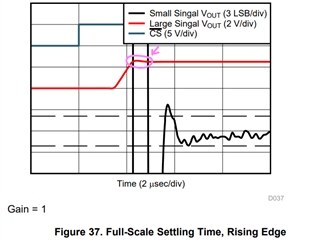Other Parts Discussed in Thread: DAC70508, DAC70504, DAC60508
Tool/software:
Hello?
While looking at the DAC product line, I have some questions about the Sample/update rate because there is something ambiguous.
The DAC80508 product is a 16-bit product with a 50 MHz Max. SPI operation method, and is listed as 0.2 MSPS in 'Home/Products/Data converters/Digital-to-analog converters (DACs)'.
Since the DAC70508 (14-bit) products are listed as 1 MSPS, the data has increased by 2 bits, so the speed has become 1/5, so I would like to request a calculation method for comparison.
In addition, please add the 'Sample/update rate' column to 'Home/Products/Data converters/Digital-to-analog converters (DACs)/Precision DACs (≤10 MSPS)'.
S.Y.Lee



